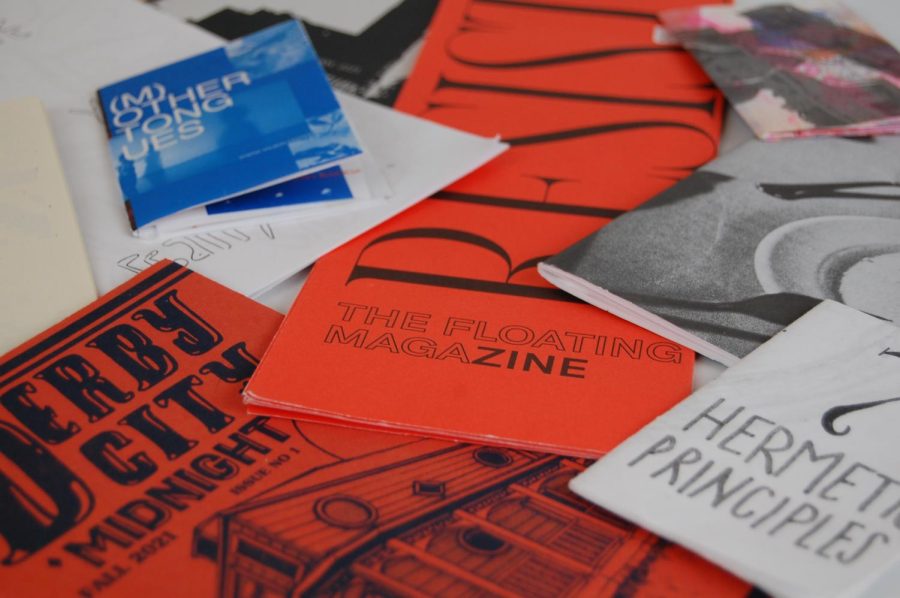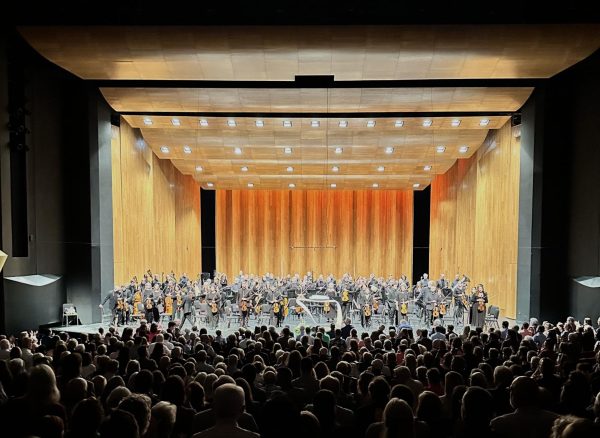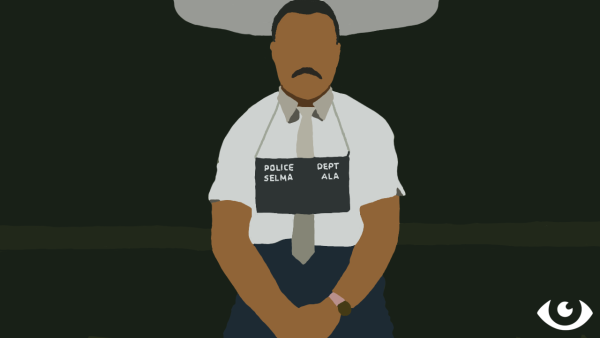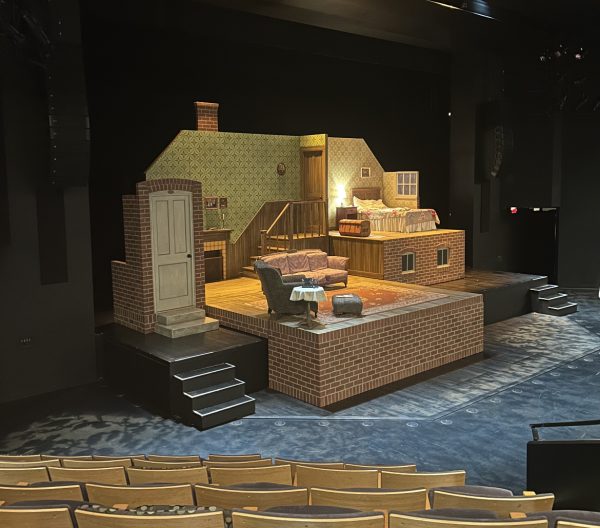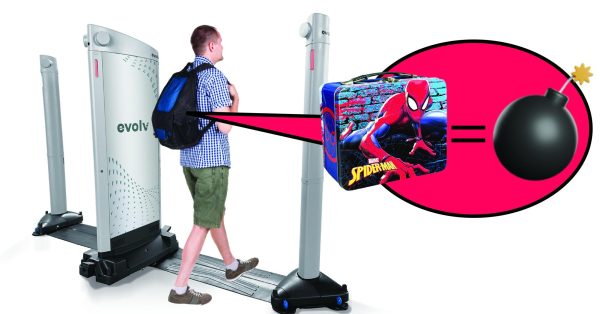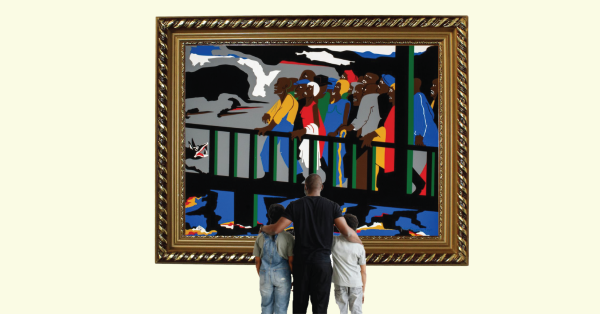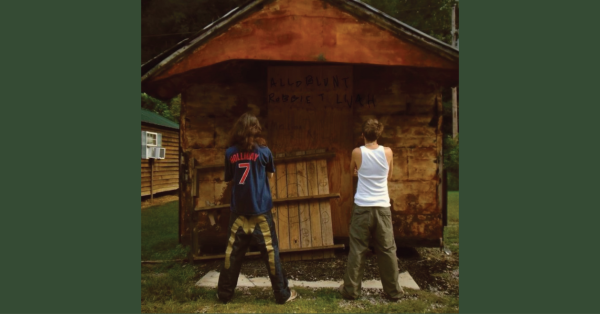Unfolding the Louisville zine scene
Zines have been around for almost a century, but the modern Louisville zine scene has started to flourish recently. Photo by Brennan Eberwine
May 12, 2023
Is Print Dead?
All signs point to yes. U.S. daily newspaper circulation fell from 55.8 million in 2000 to 24.2 million in 2020 according to the U.S. Census Bureau. Locally, circulation of the Courier-Journal has fallen over 74% since 2018.
The “why” in “why is print dead?” is a no-brainer to anyone living in the age of information, when news is instantaneously updated and reported on our cellphones and computers. Why wait for the metro edition tomorrow morning when reporters are giving you the scoop on Twitter right now with a digital article soon to follow?
Flying in the face of this is a dedicated group of people making what is called a “zine.” But, what exactly is a zine?
“That is the, like, question of the year, of the century,” Lindsey Cummins, an independent curator working for the Great Meadows Foundation and the SNAP Art Foundation, said. We spoke in a cavernous room at the top of a building on Fourth Street in Old Louisville, where the zine exhibition “papertrail” was held in March.
Cummins, along with Lucas Keown, organized “papertrail,” which showcased about 250 zines from Louisville and cities across the United States. In the center of the room, little booklets of various sizes, colors and subject matters hung by string from the ceiling. People milled about picking up and reading them.
“The only rule is that it is an unpublished book form,” Cummins said.
A zine (a title derived from “magazine”) follows a do-it-yourself format in which the creator expresses an idea or provides a space for others to say their own. They range in complexity in medium and subject matter from revolutionary political essays risographed into neatly stapled booklets to geek-outs about a TV show on a single folded piece of paper. The medium is as malleable as the creator wants it to be since they’re largely self-published or handmade.
Because of their DIY nature, sometimes made entirely by hand and made known through word-of-mouth, zines remain localized to their cities or to even just a subculture in a city. However, some can still reach many, such as the Long-running “Cometbus” punk zine created Aaron Cometbus that can be found in indie bookstores across the country or ‘90s zine Brat Magazine run by Manual teacher Liz Palmer (J+C), which had a print run of 10,000 at its peak.
Several archives include The Library of Congress, Barnard College and San Francisco Public Library. But given how many zines are hand-drawn and photocopied on around 40 copies of printer paper, the zines cataloged are likely only the more popular ones. This transient quality of the medium is what drew Cummins to work on “papertrail.”
“It feels so special to have this art object that no one will ever make more copies and there’s only those 200 copies,” Cummins said.
But the point of zines isn’t to garner a massive following, and more so to build a community. This was the case at the Second Annual Kentuckiana Zine Festival, hosted in the back of Logan Street Market in early April. Vendors sat, casually chatting with friends as their zines stood freely on the fold-up tables in front of them.
Kacey Slone co-runs the Kentuckiana Zine Festival with Kathryn Combs and also owns a small risograph studio “Junior Jr.” Risographing is a popular method for producing zines quickly, cheaply and with vibrant colors.
“I feel like there’s a total resurgence of zine-making and small-publication sharing […] in the last two years or so,” Slone said.
Some vendors were brand new to the zine scene, such as Indiana University Southeast student Favour, who folded their zines as we chatted. They hadn’t heard of the format until very recently. but found the process accessible and exciting.
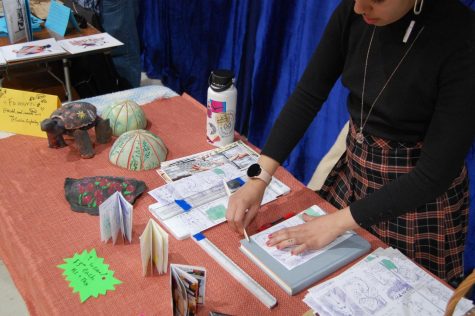
“I didn’t know they were a thing or so easily done, and I have so many ideas that I feel like just can’t be spewed out over the course of eight months. I just need to get them out immediately,” Favour said.
One of Favour’s zines on sale titled “I want to be..” was an exploration of self and personal to who they were. They were also present at the first “Kentuckiana Zine Festival,” selling “Huerca,” which showed scenes and memories from their childhood in Mexico.
Another vendor, Sydney Hancock, sold a zine titled “Tell me how you really feel” all in black-and-white, tied together with red string she made while working on a farm in Washington about healing from trauma and taking control of her emotions, writing “I cried + wrote + drew until suddenly there was a zine in front of me.” She spoke about struggling to write in college, never really feeling like she could do it until zines offered her a space to truly express herself.
It’s almost hard to believe that a zine like “Derby City Midnight,” a text-rich periodical of Kentucky folklore, is in the same category as Hancock’s work that feels more like an art piece. But that’s the magic of zines; they’re anything you want to be.
The question still remains: why? The unwieldy content creation space that zines provide seems to be supplanted by the social media sphere, where someone can post passion projects faster, easier and cheaper than by hand-making and folding paper. Social media monetization has even allowed people to make money off their hobbies, giving rise to the “influencer.”
It seems like just the next step, once again zines just seem like a product of a bygone era replaced by the internet as the best place for creative output, Zine creators have no chance of becoming “influencers.” Despite this, there’s still something special about putting energy into a format that can only be viewed by those dedicated enough to view it. The object isn’t to become famous or make money (some zine creators I talked to were shy to even ask for money for their work) but instead just to make something they cared about.
In the Internet era in which anything and everything is obsessively archived and available with just a little digging, zines are the ultimate ephemeral object in a world where nothing online will ever die. But the barrier to entry is still as low as a sheet of paper.
“Zines are for everyone, right?” Slone said.
Realistically, the world is becoming smaller and more paperless. But the zine community, armed with risograph printers, are ready to stand defiant against this attitude. They still have a lot of growing to do, that was the point of “papertrail” in fact, to curate a conversation and bring people together.
“Pushing the community to grow together and meet each other. We need it, especially in the art scene because it’s so segmented across the city,” Keown said.
The end of the welcome section of the “papertrail” booklet proudly proclaims “Print’s definitely not dead. It’s alive and well in Louisville, KY.”



